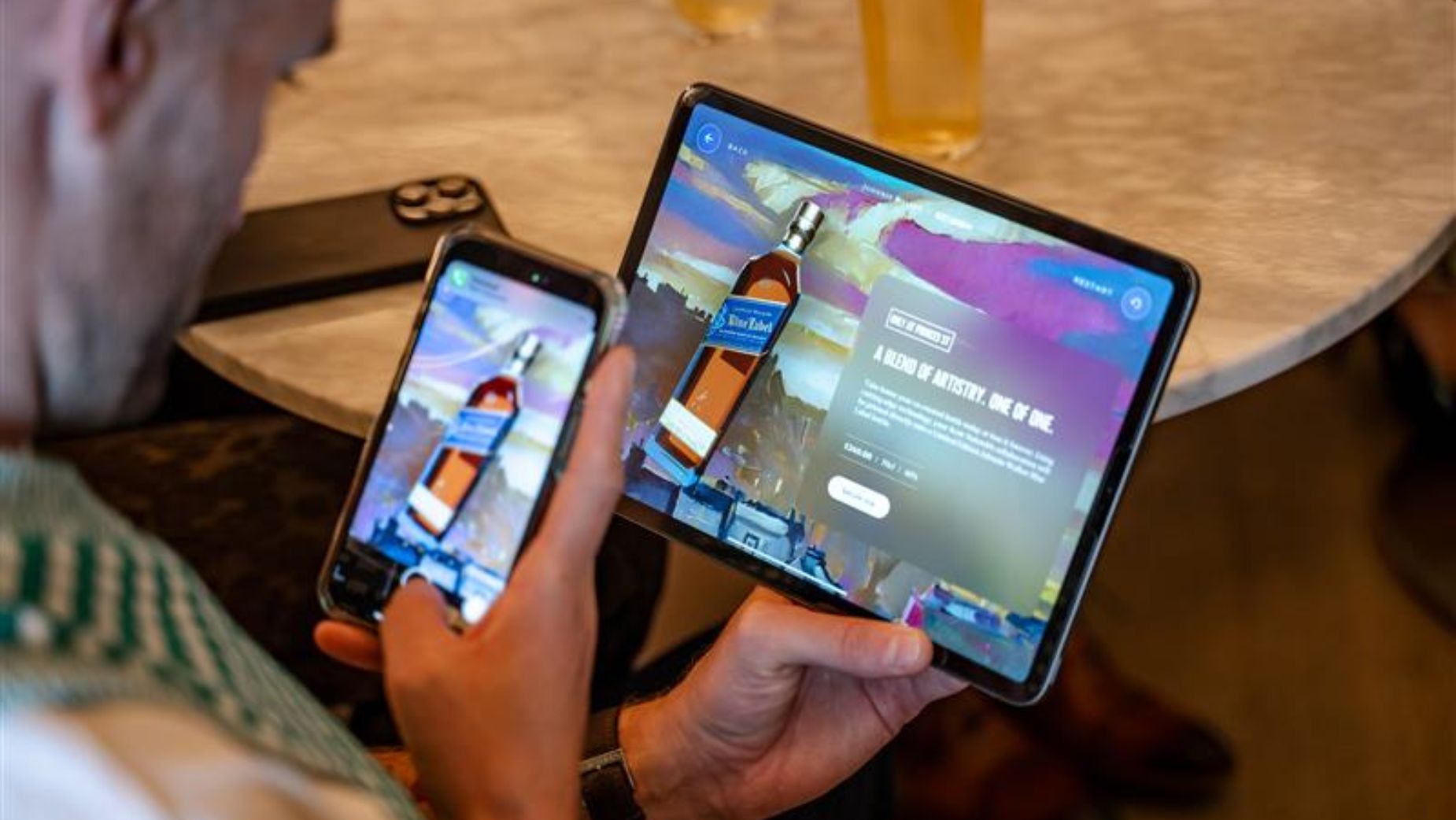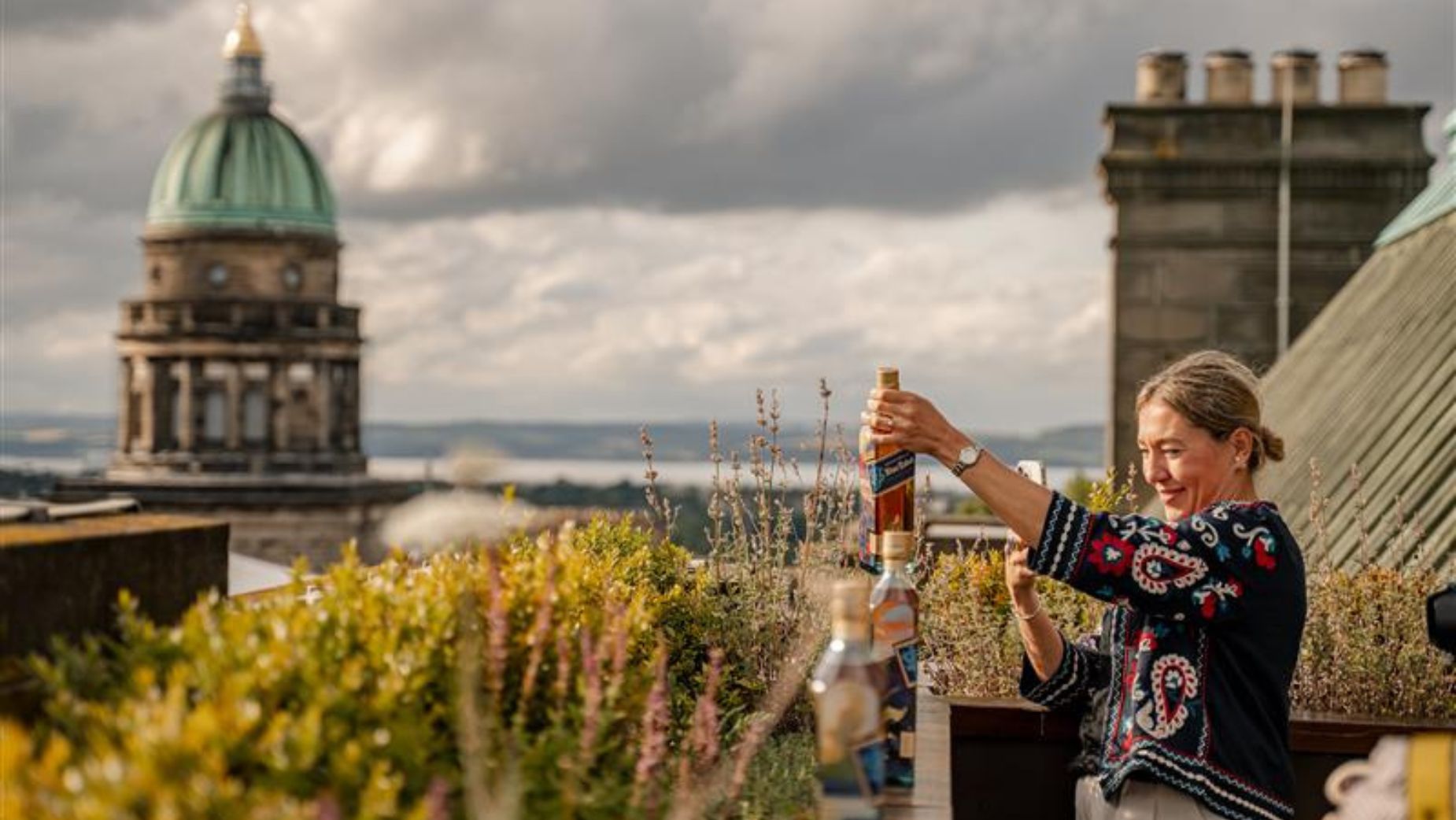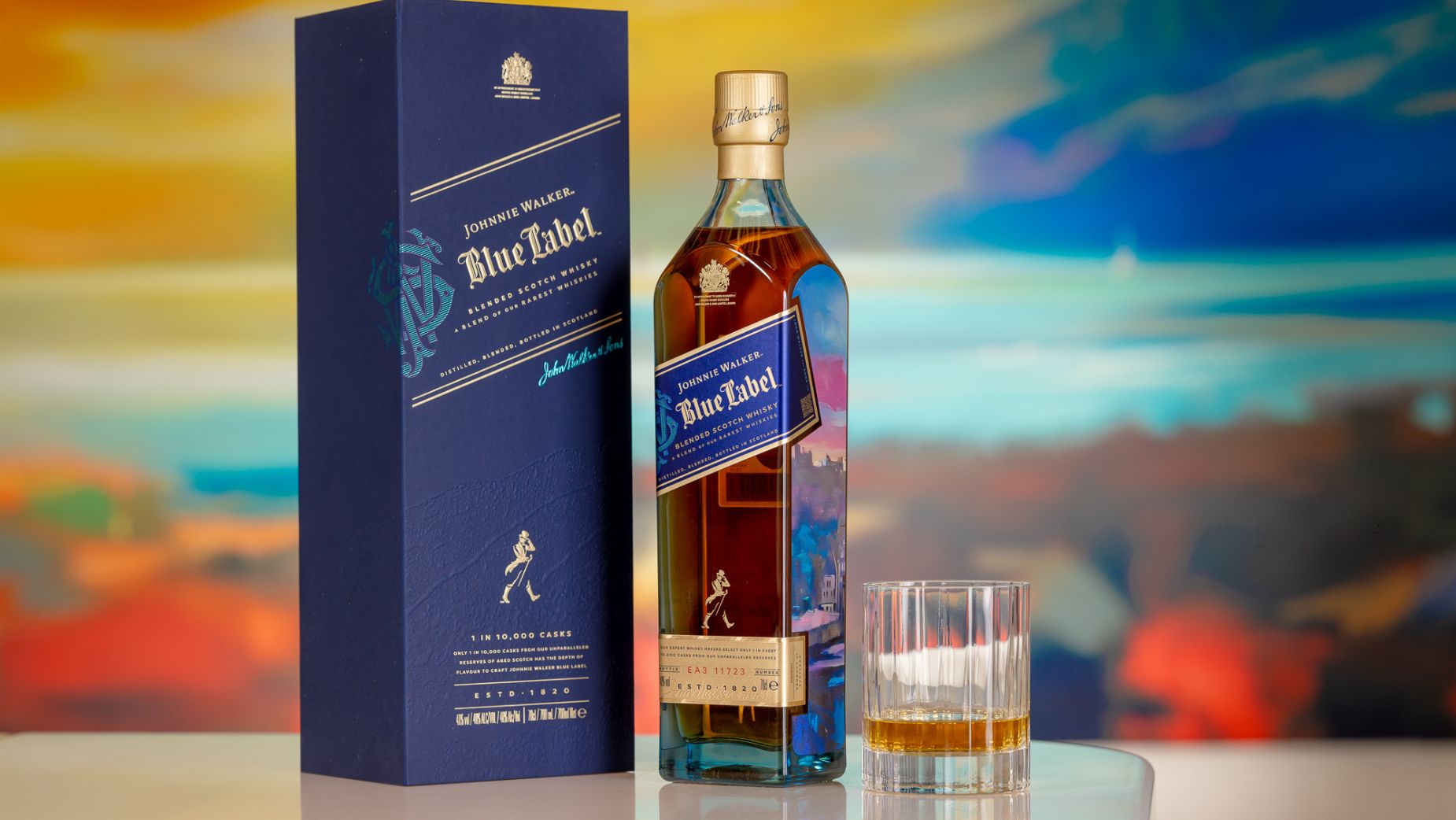
Magic Bottled: How Johnnie Walker Is Using AI to Create Personalised Bottles

This month, visitors to Johnnie Walker's flagship experience in Edinburgh will be able to get creative by collaborating with artist Scott Naismith to design personalised bottles of Johnnie Walker Blue Label. That’s not to say that the Scottish painter, known for his vivid landscapes, will be trekking down to Princes Street, brush and gouache in hand - he’ll be there not in person but in spirit, thanks to innovations in artificial intelligence and printing technology.
With an AI trained on original artworks supplied by Scott, whisky aficionados and newcomers alike will be able to generate their own unique designs which will then be printed straight onto the distinctive Blue Label bottle, already filled with whisky.
The catalyst for this project, which has taken 18 months to come to life, was the thought ‘what if I could collaborate with an artist that I loved?’, says Will Harvey, a former agency creative technologist who has been with Diageo’s Global Breakthrough Innovation team for five years. Johnnie Walker is no stranger to limited edition bottles but in AI, he saw the chance to take that to the next level.

The new personalisation
AI, he says, has largely been seen as a tool to help drive efficiency, and while Diageo has certainly been implementing that, now that gen AI has reached an inflection point, it could allow brands to take personalisation to the next level. “What if we could add co-creation? So I, as a consumer, can collaborate with my favourite artists, but enabled by a brand,” he says. “I think that’s a really fascinating area that’s not being tapped into enough, especially around personalisation.”
What’s really exciting about this particular AI project is that it’s one that celebrates a brilliant artist, and puts them front and centre. Much of the hesitancy around generative AI revolves around the legal and ethical uncertainties around using creators’ intellectual property and potentially undermining the livelihoods of artists. As a former art school kid himself, that’s something that Will feels passionately about.
In this case Scott’s art has been fed into a ‘walled garden’, an AI infrastructure that’s cut off from a wider ecosystem. That means it can’t leak Scott’s artwork to other AIs and nor can it take unmonitored, potentially unsafe or ripped-off information from elsewhere.
Will also suggests that this could be a blueprint for how artists can make money from AI in the future. “I think there’s a really interesting opportunity for the next generation of artists to think about new iterations to their revenue. If you think about artists, they do one single artwork and then try to do print runs. What if they did AI runs, where they licence their data or information to big brands to be able to allow consumers to collaborate with them, or look at getting a certain share back, or being able to take a percentage of a sale?”
Scott was the perfect artist to partner with thanks to his history of working with Johnnie Walker, his uniquely dynamic paintings of the Scottish countryside, as well as his personal openness to technology. Will recalls Scott’s fascination with the generations ‘inspired’ by his work, in some places he could feel and see the connection with his own work and in others he saw something completely unfamiliar.
“He’s always been very forward as an artist, using technology, which is probably why it lent himself to go, ‘actually I’m curious about this, what can we do?’,” says Will. “He was such a lovely collaborator, such a beautiful man that was really up for going, ‘let’s see what we can do within this space;. Trust I think, on both sides, is always a key thing with these partnerships.”
The other important partners were, of course, the tech partners who helped bring it all to life, including Phantom, Amazon AWS, Hybrid Software, GMG and Roland DG. In a space like AI, which is evolving all the time, getting the right tools and partners can be tricky. “It’s like mixing a cocktail. It’s about bringing different partners and different ingredients together to be able to build our vision. Sometimes that first iteration needs a bit of tweaking. We did bring four or five different partners across different spaces, whether it’s the infrastructural technology like Amazon AWS, whether it’s a digital build agency like Phantom or a print company like Roland DG and GMG. They all brought different expertise to the table to build this first blueprint that we can think about evolving,” says Will.
In such a confusing landscape, Will says it’s important to have a clear sense of what you’re doing and why. “Every day there’s an announcement about AI,” he says. “I think you need to put a stake in the ground and responsibly try something. We built this in a very controlled way. We built it in a way to be able to respect the artist, respect the ecosystem.”

Digital and material innovation
It’s not just the inventive use of AI that makes the project exciting, explains Will. He worked with his colleague Paul Horton, who does innovation on the packaging and graphics side of the business and his team over eight months to figure out a way to print directly onto already-filled bottles. To do so with a sufficiently luxurious, premium finish is no small feat.
This leap opens up a world of possibilities for Diageo, from being able to print bespoke limited edition bottles in local markets to a larger scale version of in-store personalisation. With the famous square bottles mastered, the team is now experimenting applying these techniques to cylindrical bottles.
“This program is not just an innovation in technology, it’s an innovation in printing,” says Will. “What we can do is we can print directly onto a bottle that is full of liquid at the last mile, so it lends itself to customisation. So we can get Johnnie Walker Blue sent around the world, all from our fulfilment centres, but then we can have different markets and regions that can print unique one-of-a-kind artworks, collaborations with local artists. It was hand in hand with what can be done with a bottle with what can be done with technology and with artists. It all came together at the same point.”
“That can really unlock, using our products as a canvas, to create something beyond just putting your name on a bottle. It’s really elevated gifting. That idea of elevated personalisation is more and more demanded by consumers in the current landscape.”
For Will it’s been a chance to nerd out in new areas. “I normally do digital things. I do pixels. I do on-screen. This project had to push me out of my comfort zone, learning about packs and learning about printing and learning about fulfilment. It was exciting because it challenged me as a creative technologist and an innovator,” he says.
The experience will run from August 1st-31st and Will is looking forward to heading to Edinburgh to spend time with people who are trying their hand at the experience. The team already knows that people love the magic of in-person personalisation; engraving is on offer at the Johnnie Walker Experience and at the Guinness Storehouse in Dublin and people are always keen to take photos and videos of that process. So Will is curious to see how the diverse blend of locals and tourists who visit the experience feel about playing with AI, what expectations they have and more.

Firing the engine
And now that the team has cracked these new solutions, they’re excited to see where else they could apply, and iterate on them. The project is the brainchild of the Global Breakthrough Innovation team at Johnnie Walker’s parent company Diageo. It’s part of Project Halo, an internal ‘engine’ they’ve established to help enable the use of AI across its portfolio of brands, which includes Guinness, Baileys and Captain Morgan.
According to Will this ‘engine’ idea has been created in order to make sure the practical building blocks are in place to allow teams to easily get up and running quickly. “We sat down with a lot of the leadership at Diageo to think about this new way of working in Breakthrough. It’s less about campaigns, but it’s about platforms or ‘engines’ as we started to call them. Engines are repeatable, reusable mechanics, so basically something you can use for multiple brands,” says Will, who explains that with Project Halo, they’ve been working with teams like legal and IP to build those foundations.
By way of illustration, Will shares the first big project he worked on upon joining the Global Breakthrough Innovation team, ‘What’s Your Whisky’. It uses an AI-powered questionnaire to help newbies find the right whisky for their palate. That was driven by the ‘Flavour Print Engine’, allowing other parts of the business to build on that intelligence to create their own ‘What’s Your Beer?’, ‘What’s Your Cocktail?’ platforms.

So for Diageo, we may well be seeing more brands taking this basic framework into new exciting areas. “There are so many others in the portfolio that have communities, have artist collaborations, have spaces where people want to be part of the brand and want to feel like they have a voice in it,” says Will. “So watch this space, but there’s definitely a really interesting pipeline of things that we’re just really excited about exploring.”














